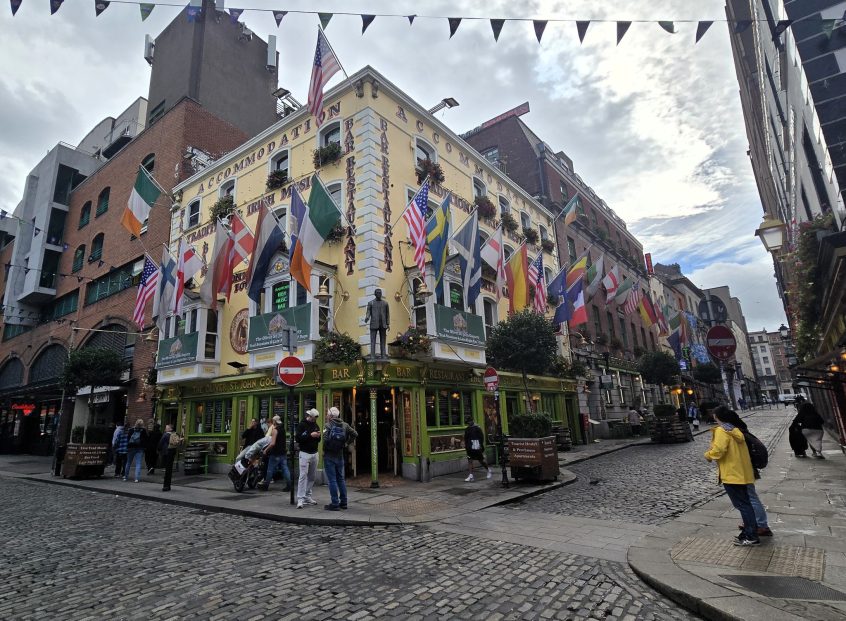The difference between Northern Ireland and Dublin has been striking. For me, it began with the weather. In Belfast and Donegal, I battled rain and chill; in Dublin, the sun has been shining, and the air feels almost warm. But the greater contrast is in atmosphere.
Belfast and Dublin are both capitals, but their scale gives them quite different personalities. Belfast, with about 345,000 residents in the city and roughly 700,000 in the metro area, feels approachable—large enough to brim with history and culture, yet small enough that I quickly got my bearings. Dublin, by contrast, has nearly 600,000 people in the city proper and close to two million in the greater region. I sensed the energy of a city that’s home to a third of the country’s population. Like New York City, people walk fast, as if on a mission. And there’s no possibility of missing the large crowds of tourists.
Another striking characteristic of Dublin is the sheer number of churches and pubs. It’s an odd juxtaposition: solemn spires rising skyward alongside brightly painted pub doors.
Churches, from grand cathedrals like St. Patrick’s and Christ Church to smaller parish chapels, reinforce the importance of Catholicism and Dublin’s deep religious history. Their stone walls hold centuries of ritual, tradition, conflict, and quiet reflection.
Pubs, on the other hand, are Dublin’s living rooms. They spill warmth and chatter into the streets. Music drifts out the doors, while tourists and locals chatter or sing over pints. The atmosphere is anything but solemn.
Since my last visit two decades ago, there’s been another dramatic change. Entire districts, especially along the River Liffey, now gleam with steel and glass, office towers, tech company headquarters, and striking contemporary bridges.
I was especially taken with the Samuel Beckett Bridge, designed by Santiago Calatrava, which looks like a harp stretched across the river. Nearby, the tilted glass cylinder of the Dublin Convention Centre has become one of the city’s most recognizable landmarks. These buildings reflect Dublin’s transformation into a European hub for global finance, technology, and international events.
What’s most remarkable is how the new interacts with the old. A centuries-old church or Georgian townhouse often stands shoulder-to-shoulder with a modern façade. Sometimes the mix feels jarring, but more often it adds to Dublin’s charm. History is always present, yet the city is clearly reinventing itself for the future.
I’ll admit that most of these impressions came from the top of a hop-on-hop-off bus. After nearly two weeks of traveling, my back feels every minute of this journey. Walking more than a few blocks has become an exercise in pain and determination.
The bus gave me a way to take in the city comfortably, and I was surprised at just how much I saw: the stately front gates of Trinity College, where the Book of Kells draws long lines of visitors; O’Connell Street, with its mix of grand Georgian buildings, shops, and the soaring stainless steel “Spire of Dublin”; the General Post Office, still a proud symbol of the 1916 Rising; and leafy squares filled with Georgian townhouses in their famous rainbow of brightly painted doors. From the open-air top deck, I could observe the city in comfort, catching glimpses of both its history and its modern hustle.
Tomorrow I will fly home to New York City. It’s been a wonderful trip, full of interesting conversations, rainbows, ruins, markets, and museums, but I’ll be glad to sleep in my own bed again, with Pookah curled up by my side.

